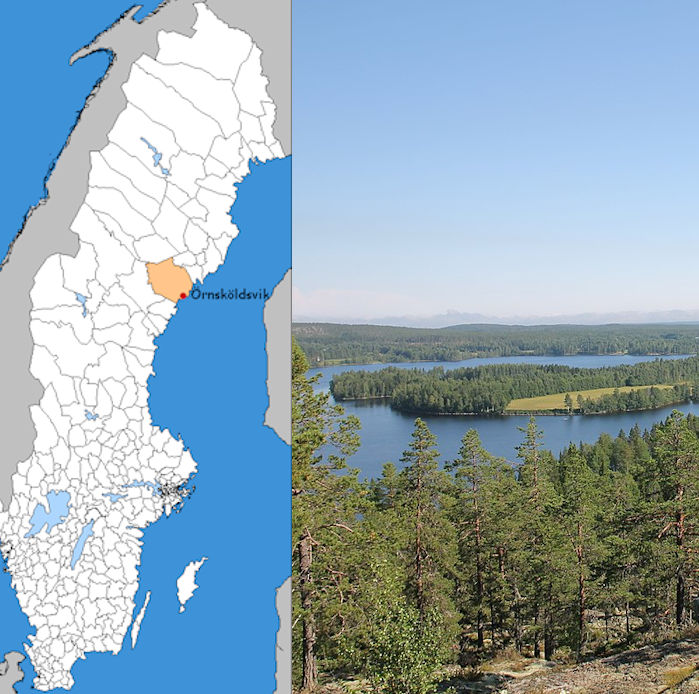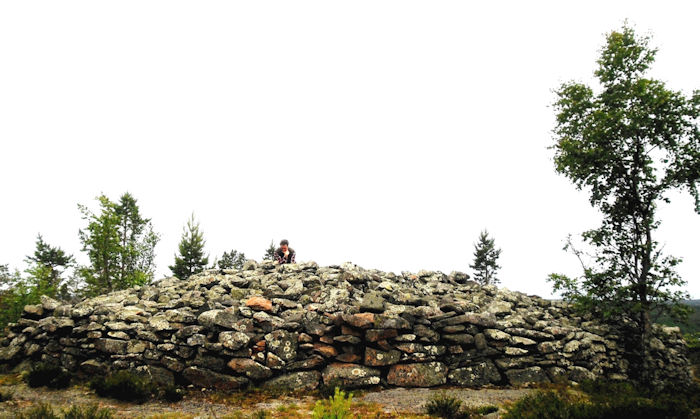Spir Mountain Cairns: Prehistoric Ancient Monuments To The Dead In Northern Sweden
Ellen Lloyd - AncientPages.com - In Northern Sweden, there are many fascinating and mysterious ancient sites and places.
Unfortunately, several of these historical sites have not been properly investigated because they are very difficult to access. Due to their remote location, they are also little known to their outside world.
Left: Location of Örnsköldsvik Municipality in Sweden. Credit: Fred J - CC BY-SA 2.5 - Right: Byviken, Örnsköldsvik Municipality. Credit: Sasja - CC BY-SA 3.0
The Ritual Use Of Cairns
The tradition of building cairns and stone settings in the coastal area is generally ascribed to the Bronze Age and Iron Age. Cairns and cairn-like monuments can be found in many different parts of Sweden, Norway, and Finland. In the city of Örnsköldsvik in Norrland, we come across some of the best prehistoric monuments that Sweden has to offer – the Spir Mountain cairns.
Many of the cairns were constructed near or overlooking what was once the seashore. They are standing about 30-50 meters above present sea level. During the Bronze Age, the Spir Mountain had once been an island within a bay.
One can find many ancient cairns along the coast of Norrland. Our ancestors placed them all the way from northern Uppland to Piteå in Norrbotten, a distance of about 860 kilometers. The coastal cairn-zone in Ångermanland is particularly rich and includes about 700 registered sites. There are roughly over 2,300 cairns and stone settings distributed along the northern coast, but they are not represented at all in the interior of Norrland.
The discussion about the ritual use of cairns is vast. It is generally held that the use of Bronze Age cairns and cairn-like stone settings is similar to the ritual use of Bronze Age mounds, that is, they represent burial monuments raised over individual persons.
Ancient cairns were of religious importance to our ancestors. It was believed that by frequently rebuilding the cairns and placing bones inside them, these ancient monuments would become active and enable communication with higher powers. Many of the cairns contain cremation burials and this indicated they appear to have been built as monuments to the dead.
Norrland is famous for its beautiful Northern Lights, but there are also many interesting archaeological sites here. Credit: Pavel.shyshkouski - CC BY-SA 4.0
A widely held suggestion concerning the underlying motives behind religious sacrifices, ritual ceremonies and festivals, is the attempt to maintain and support the existing "world-view" or "cosmological" order within a society or group over time.
The sacrificial rituals may vary from one society to another, but the motives are generally to receive luck, prosperity, forgiveness, stability, safety, fertility, etc., from the higher powers of both ancestors and gods.
It is reasonable to suggest that the ritual use of the cairn-monuments also aimed at creating contact between the living society and the spirits of the ancestors. In this practice, the cairns and stone settings became a medium through which contact with the ancestral spirits could be channeled.
Some researchers also suggest the cairns functioned as tribal markers for family group territories.
The Discovery Of Two Very Large, Well Preserved And Almost Perfectly Circular Cairns
Some years ago, archaeologists discovered two astonishing cairns in Ångermanland. The larger of the cairns is 13m in diameter. It is exceptionally well preserved, and almost perfectly circular. The stone required for construction must have required an immense investment of labor. The smaller cairn is just to the east and is 6m in diameter.
The Spir Mountain cairns have internal burial chambers with cists containing skeletal remains, accompanied by various grave goods. In some cases, the cairns have been used repeatedly, and have been expanded out from their original structures.
Archaeologist Carl L. Thunberg at the larger of the Spir Mountain Cairns. Credit: Ångermanlands fornminnesförening - CC BY-SA 4.0
The cairn-building tradition was widespread in Northern Sweden and the existence of cairns along the coast could possibly reveal different cultural and economical systems between the Bronze Age people. The social and economic structure in Bronze Age Norrland has by several archaeologists been viewed as u dualism between the coast and the inland area.
Scientists say there was an egalitarian structure with hunter-gatherers in the interior of Norrland and a more complex and socially stratified order with "ranked" farmers buried in cairns along the coast. The cairn-building tradition is, undoubtedly, one of the more evident material differences between interior and coast in Bronze Age Norrland.
Written by Ellen Lloyd – AncientPages.com
Copyright © AncientPages.com All rights reserved. This material may not be published, broadcast, rewritten or redistributed in whole or part without the express written permission of AncientPages.com
Expand for referencesActivating the Monuments - The Ritual Use of Cairns in Bronze Age Norrland by Hans Bolin
More From Ancient Pages
-
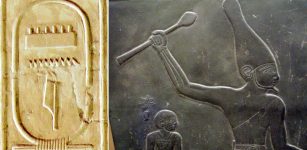 Menes – Legendary First Monarch Probably Under Different Names Who Unified Egypt
Featured Stories | Nov 7, 2016
Menes – Legendary First Monarch Probably Under Different Names Who Unified Egypt
Featured Stories | Nov 7, 2016 -
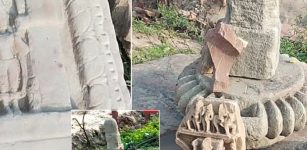 11th-Century Pratihara-Era Temple Accidentally Found By A Farmer In Uttar Pradesh, India
Archaeology | Aug 6, 2020
11th-Century Pratihara-Era Temple Accidentally Found By A Farmer In Uttar Pradesh, India
Archaeology | Aug 6, 2020 -
 On This Day In History: Napoleon Bonaparte Dies In Exile – On May 5, 1821
News | May 5, 2016
On This Day In History: Napoleon Bonaparte Dies In Exile – On May 5, 1821
News | May 5, 2016 -
 Lost Biblical City, Ancient Treasure And Atlantis – Biblical And Archaeological Perspective
Ancient Mysteries | Apr 27, 2018
Lost Biblical City, Ancient Treasure And Atlantis – Biblical And Archaeological Perspective
Ancient Mysteries | Apr 27, 2018 -
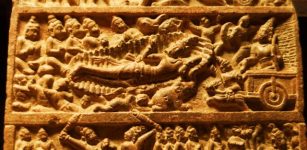 Decoding Ancient Secrets Of Fascinating Virupaksha Temple
Archaeology | Nov 15, 2014
Decoding Ancient Secrets Of Fascinating Virupaksha Temple
Archaeology | Nov 15, 2014 -
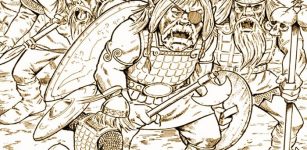 Fomorians: Supernatural Race Of Giants Who Came From Atlantis
Celtic Mythology | Jul 18, 2017
Fomorians: Supernatural Race Of Giants Who Came From Atlantis
Celtic Mythology | Jul 18, 2017 -
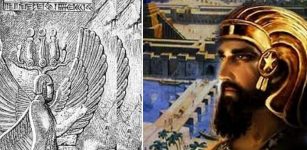 Cyrus The Great: Founder Of Achaemenid Empire Who Conquered Medians, Lydians And Babylonians
Featured Stories | Mar 21, 2019
Cyrus The Great: Founder Of Achaemenid Empire Who Conquered Medians, Lydians And Babylonians
Featured Stories | Mar 21, 2019 -
 Old Unexplained Mystery Of The Frightening Woman On The Isle Of Iona
Featured Stories | Mar 8, 2024
Old Unexplained Mystery Of The Frightening Woman On The Isle Of Iona
Featured Stories | Mar 8, 2024 -
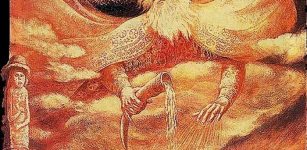 Secrets Of The ‘Worlds Of Prav, Nav And Yav’ Revealed – Ancient Slavic Wisdom Confirms The Multiverse Theory
Featured Stories | Oct 6, 2015
Secrets Of The ‘Worlds Of Prav, Nav And Yav’ Revealed – Ancient Slavic Wisdom Confirms The Multiverse Theory
Featured Stories | Oct 6, 2015 -
 Neanderthals Changed Ecosystems 125,000 Years Ago
Archaeology | Dec 16, 2021
Neanderthals Changed Ecosystems 125,000 Years Ago
Archaeology | Dec 16, 2021 -
 On This Day In History: Battle of Stirling Bridge Took Place – On Sep 11, 1297
News | Sep 11, 2017
On This Day In History: Battle of Stirling Bridge Took Place – On Sep 11, 1297
News | Sep 11, 2017 -
 Study Of Environmental Conditions Of Early Humans In Europe And The Out-Of-Africa Migration
Archaeology | Sep 8, 2021
Study Of Environmental Conditions Of Early Humans In Europe And The Out-Of-Africa Migration
Archaeology | Sep 8, 2021 -
 Hopi Ancestors Witnessed Flying Shields In The Skies Over Palitkwapi – The ‘Red City’
Civilizations | Apr 8, 2017
Hopi Ancestors Witnessed Flying Shields In The Skies Over Palitkwapi – The ‘Red City’
Civilizations | Apr 8, 2017 -
 Machu Picchu Was Built With The Royal Unit System – New Research Suggests
Archaeology | Jan 14, 2021
Machu Picchu Was Built With The Royal Unit System – New Research Suggests
Archaeology | Jan 14, 2021 -
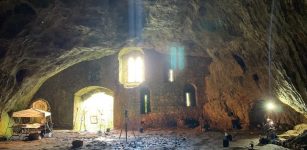 Cave Hidden Under Pembroke Castle in Wales Could Hold Secrets Dating Back 10,000 Years
Archaeology | Jul 16, 2022
Cave Hidden Under Pembroke Castle in Wales Could Hold Secrets Dating Back 10,000 Years
Archaeology | Jul 16, 2022 -
 Mahabharata Is Much Older Than Previously Thought – Archaeological Discovery Reveals
Archaeology | Oct 22, 2019
Mahabharata Is Much Older Than Previously Thought – Archaeological Discovery Reveals
Archaeology | Oct 22, 2019 -
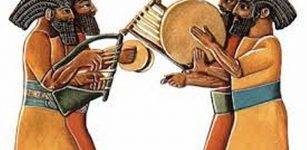 First Record Of Ancient Music Of Babylon
Civilizations | Dec 19, 2014
First Record Of Ancient Music Of Babylon
Civilizations | Dec 19, 2014 -
 Longest European Burial Mound Pre-Dating The Egyptian Pyramids Discovered In Czechia
Archaeology | Jun 24, 2024
Longest European Burial Mound Pre-Dating The Egyptian Pyramids Discovered In Czechia
Archaeology | Jun 24, 2024 -
 Ancient Egyptians Were Familiar With Advanced Ink Technology 2,000 Years Ago – Copper Papyri Reveals
Ancient Technology | Nov 13, 2017
Ancient Egyptians Were Familiar With Advanced Ink Technology 2,000 Years Ago – Copper Papyri Reveals
Ancient Technology | Nov 13, 2017 -
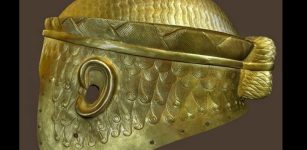 Helmet Of Meskalamdug – Sumerian King Of The First Dynasty Of Ur
Artifacts | Apr 14, 2016
Helmet Of Meskalamdug – Sumerian King Of The First Dynasty Of Ur
Artifacts | Apr 14, 2016

